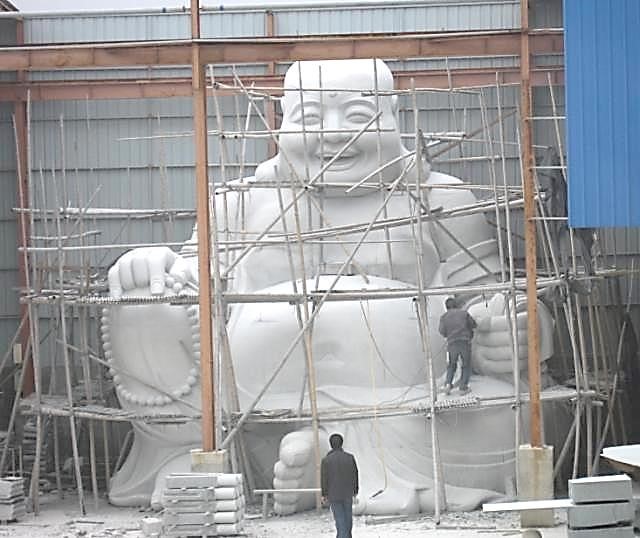Construction Progress of Wutai Shan Buddhist Garden in Canada
Publish: 2016-09-16 14:29:17 Author: Cham Shan Temple Source: Cham Shan Temple
Parcels of land totalling1350 acres were purchased in 1990 for the construction of the Four Great Sacred Buddhist Mountains in Canada, namely Wutai Shan, Emei Shan, Putuo Shan and Jiuhua Shan.
There are four separate development plans for these four locations. The first site being developed is the Wutai Shan Buddhist Garden in Canada, located in the Township of Cavan-Monaghan, Peterborough County, accessed from Ski Hill Road in Bethany, in the City of Kawartha Lakes. The construction permit for the first phase of the Wutai Shan Buddhist Garden in Canada project, the Main Dharma Hall, was granted on March 23, 2011, and the groundbreaking ceremony was held on May 28 of the same year.
What was once barren land has now been transformed into a beautiful haven. In the last few years, access roads and paths were built, trees planted, ponds were excavated and built, and the construction and installation of many Buddha statues and stupas are in place. Two majestic stone-carved lion statues stand guard on both sides of the Main Gate. Stone-carved Peace Stupas lined the 5.3 kilometers “Bodhi Path”, leading to the serene Wisdom Pond.
The Wisdom Pond was originally a piece of wetland. As a sacred Buddhist mountain, it may be lacking in spirituality for not having a pond or water. Therefore one of the Founders, Elder Master Sing Hung, suggested excavating the wetland to form a lotus pond. On excavation, three running water fountains with water spouting out were discovered. After excavating, it has become a 600-meter long, 150-meter wide and 10-meter deep majestic and beautiful lake, which was then given the name "Wisdom Pond" by Elder Master Sing Hung. The Wisdom Pond is also a symbol of purifying the mind of all sentient beings and spreading Dharma water over North America.
The first building under construction is the Main Dharma Hall. It consists of 3 levels:
· First Level, Main Activities – spans over 30,000 sq. ft., covering a memorial hall, reception, gift shop, dining hall, private quarters for the sangha, security office, storage areas, kitchen, etc.
· Second Level, Mezzanine – provides changing rooms for prayer service participants, mechanical room, and washrooms.
· Third Level, Main Wooden Temple – spans over floor area 12,200 sq. ft., with indoor area of 8,000 sq. ft. There will be carved wooden Buddha statues placed in the four corners, and the three statues of Sakyamuni Buddha, Medicine Buddha, and Amitabha Buddha, together with the four great Bodhisattvas: Manjusri, Samantabhadra, Avalokitesvara and Ksitigarbha, occupying the center stage for worship. This building is the Main Dharma Hall of the project, and this wooden temple will be used to host all important prayer services in the future.
The Main Wooden Temple is built according to the Tang-style architecture with the ancient Chinese construction method called “Dougong”, using wooden interlocking brackets without nails. The grand temple is a replica of the 1200-year-old Foguang Temple in China, which is still in good order.
Construction materials for the Main Temple used are high grade rosewood - 2800 cubic meters, camphor wood - 200 cubic meters, and yew wood - 300 cubic meters. All wooden construction materials will be treated with 5 tons of natural varnish to prevent decay, insect infestation, and splitting. The roof structure will be covered by about 150 tons of bronze roof shingle tiles.
The original design for the temple interior consisted of 36 round support pillars, but Ven. Dayi Shi bravely replaced the design with two 17 meter-long overhead horizontal support beams to open up the visual space inside the temple, making these the longest horizontal support beams in the architectural design in the world. To date, only ancient palaces in China have used this form of architectural construction.
Other buildings to be constructed will be the 5000 sq. ft. Guanyin Hall, the 5000 sq. ft. Ancestors Hall, and the 7000 sq. ft. King Hall. The main gate entrance to the site will span 30 meters wide, 15 meters tall.
Several projects such as road construction, excavation and forming of the Wisdom Pond, and the construction of the concrete building for the Main Dharma Hall were completed with services provided by two Canadian companies. There are sub-projects of different types and the work was done by several companies, both domestic and overseas.
Funds invested so far include: 8 million for the foundation engineering of Main Dharma Hall, 16 million for wooden materials, 3.5 million for stone Buddha statues, 3.15 million for the five 9.99-meter high bronze statues of Manjusri Bodhisattva, 1.15 million for the 700-pound stone statue of Maitreya Buddha, 250 thousand for Ksitigarbha Bodhisattva statue, 150 thousand for the Wisdom Pond, 15 thousand for stone stupa, 130 thousand for dam project, 2.6 million for the seven 9-metre high Buddha statues in the Main Dharma Hall (with the help of sponsorships from various generous donors), 1.5 million for the cost of design and applications, and 500 thousand for road construction, approximately CAD $37 million in total.
So far, Wutai Mountain in China has gifted five 9.99-meter high bronze statues of Manjusri Bodhisattva, and a statue of the Fifth Dragon King to the Wutai Shan Buddhist Garden in Canada. Putuo Mountain in China has gifted a 4.9-meter high statue of Avalokitesvara Bodhisattva of the South Sea to Putuo Shan Buddhist Garden in Canada. In July 2016, Jiuhua Mountain in China gifted a 9.99-meter high statue of Ksitigarbha Bodhisattva to Jiuhua Shan Buddhist Garden in Canada and its consecration is planned for October 2016. Works that were completed in 2015 included the base of the grand stone statue of Maitreya Buddha (13 meters in height), preparation for the assembly of wooden frames for the Main Dharma Hall and its related works. The construction of Main Dharma Hall and the installation of Maitreya Buddha's statue will be carried forward to 2017.
In 2011, the Deputy Director of the National Bureau of Religious Affairs of P.R.C. Mr. Jiang Jianyong, the late Venerable Master Jinghui, and the Vice-President of the Buddhist Association of China Venerable Master Miaojiang (President of the Buddhist Association of Wutai Mountain at that time) visited Wutai Shan Buddhist Garden in Canada. Noticing the similarities between the two Wutai Shan temples in China and Canada, Venerable Master Miaojiang handwrote "No Distinction between Two Mountains" and vowed to gift five statues of Manjusri Bodhisattva (9.99 meters in height each) with a total value of RMB ¥15.6 million to Wutai Shan Buddhist Garden in Canada. The statues of Manjusri Bodhisattva in Wutai Shan Buddhist Garden in Canada came from the Wutai Mountain in China. This symbolizes that both sites share the same root and the same heritage in Buddhism. These five statues are now being completed in China.
Aerial Image of Wutai Shan Buddhist Garden in Canada:
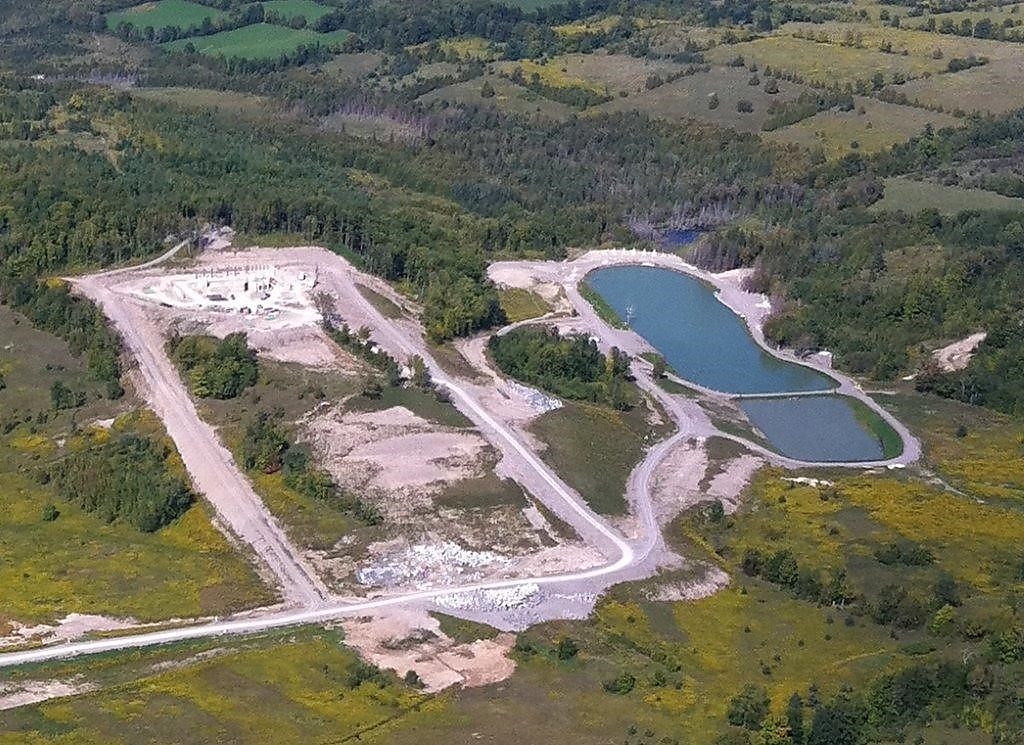
Conceptual Design of Wutai Shan Buddhist Garden in Canada:
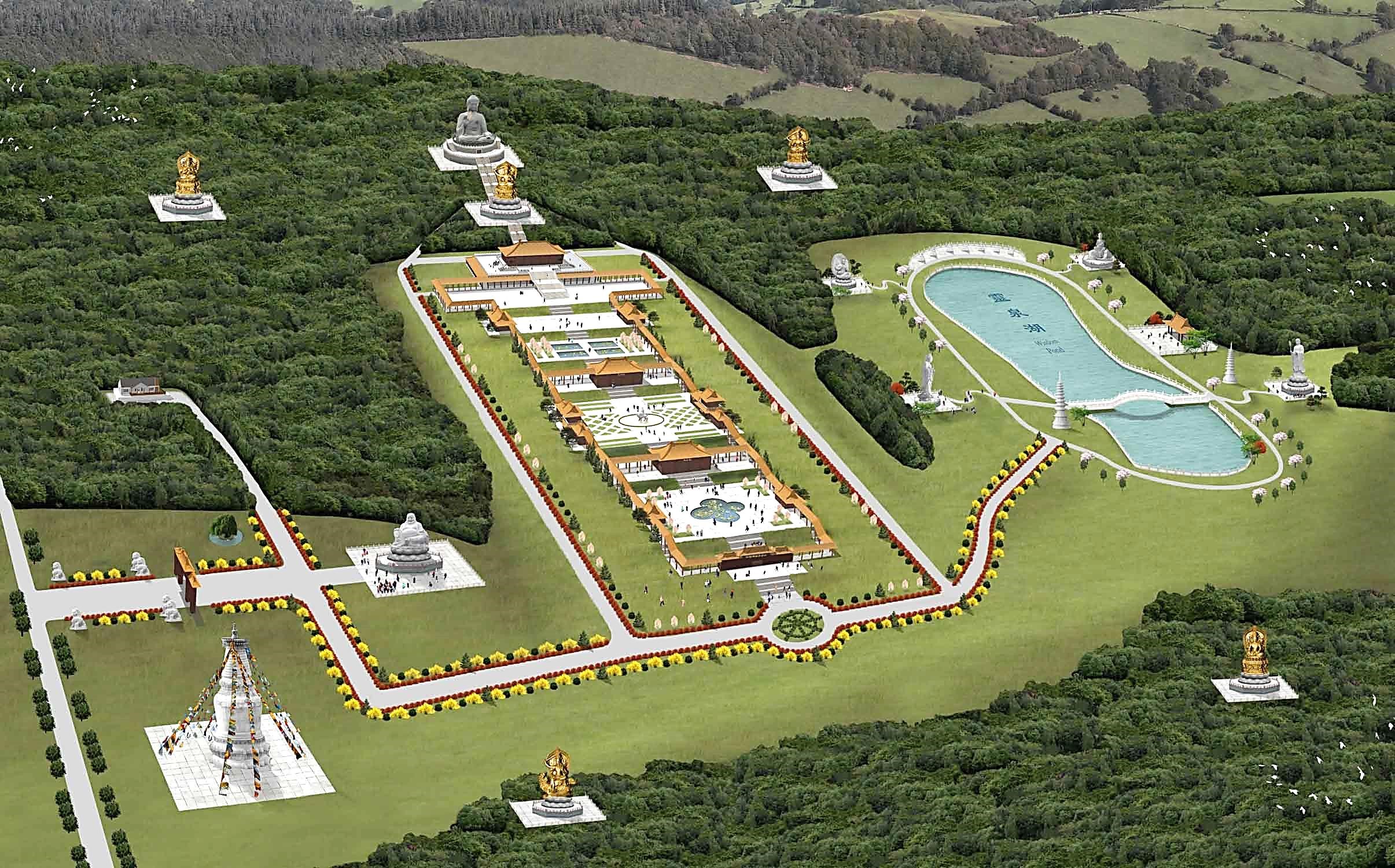
Tang Dynasty Architectural Design of the Main Wooden Temple. Tang Dynasty was an Imperial Dynasty of China (618-907), the most glorious historic period in Chinese history:
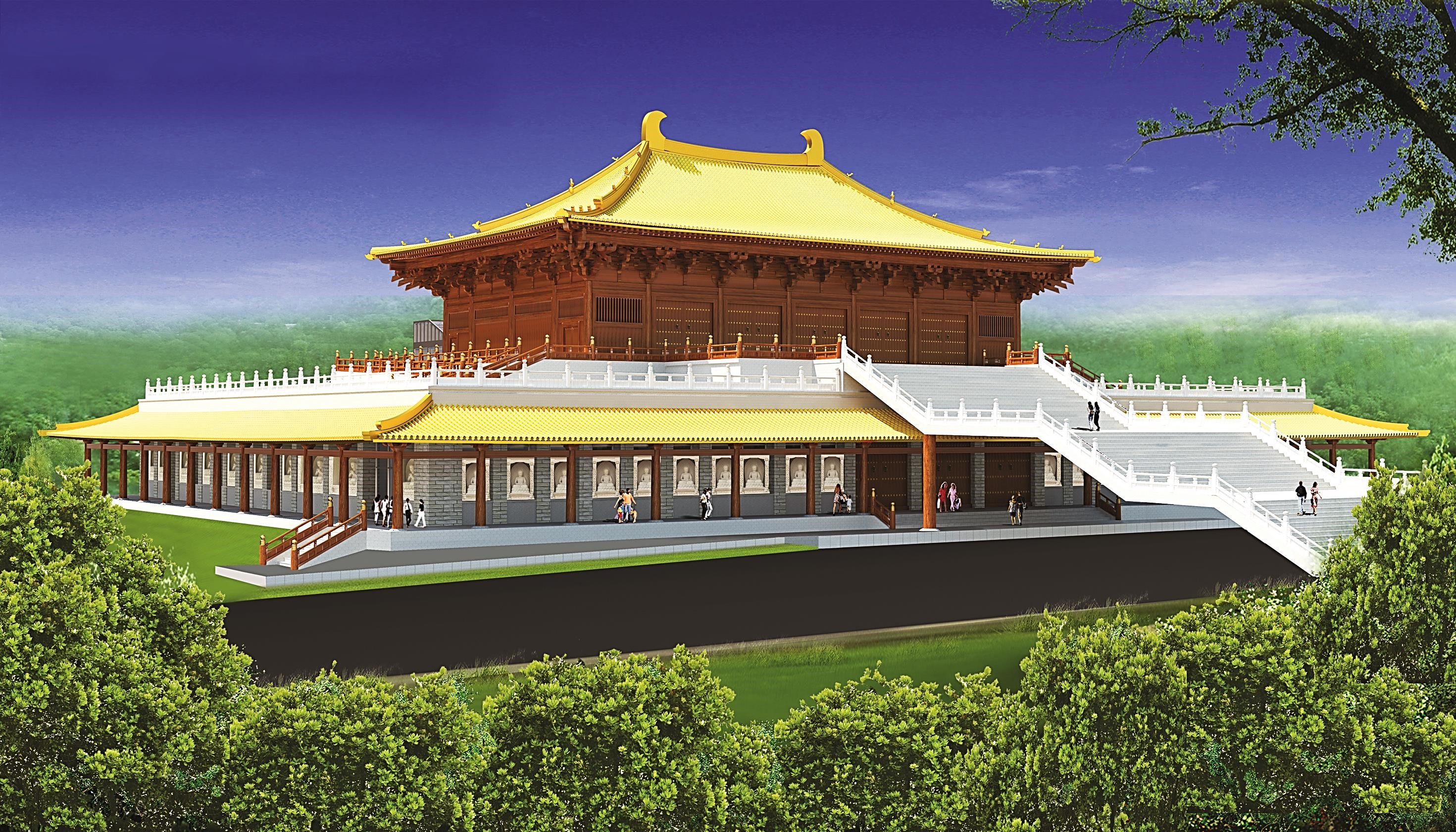
“Dougong Bracket” is a unique structural element of interlocking wooden brackets, which joins without requiring nails. This ancient building technique is typical of Tang Style Architecture over 1000 years ago:
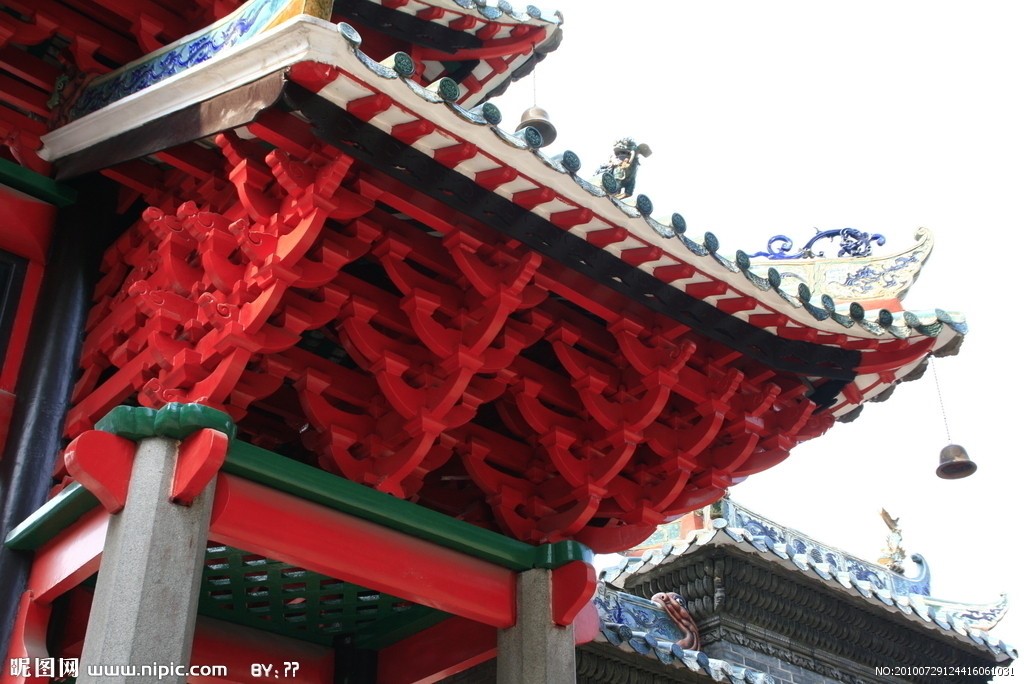
13-metre high stone-carved Maitreya Buddha (a.k.a. Happy Buddha) statue being assembled onsite:
